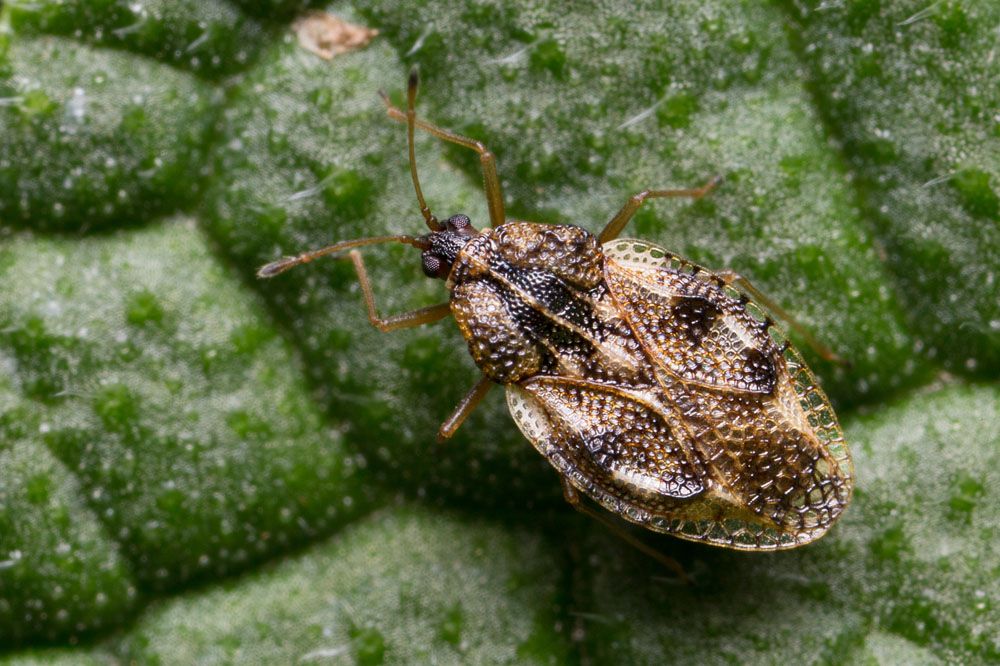
Lace Bugs
Lace Bugs (Tingidae)
Lace bugs are a significant pest of a variety of ornamental plants and shrubs. They infest a wide variety of evergreen and deciduous trees and shrubs, and they generally go undiscovered until the afflicted plants display significant damage.
What are Lace Bugs?
Lace bugs are tiny insects that only reach a length of a one-eighth inch (3 mm). Their wings and thorax are covered with small, transparent cells, giving them a lacy look. They get their food by sucking the sap off the leaves of trees and shrubs, which makes them mottled, stippled, and discolored. Dealing with lace bugs might be aggravating, but the good news is that you can eliminate them from your garden with efficient lace insect treatment.
What Causes Lace Bugs?
Lace bugs are easily detected by looking at the underside of leaves, especially around the midrib. If you look attentively, you may see adults and fully-fledged nymphs on leaf surfaces. The appearance of lustrous brown to black dots on the leaf surface is another indicator of lace bugs. The adult female lace insect lays eggs on the leaves of host plants, usually towards the midrib and on the underside. Nymphs hatch from the eggs in around two weeks and begin eating on the leaves, maturing into adult lace bugs in three to four weeks. Lace bugs are most common on sensitive plants in late spring and early summer.
Life Cycle of Lace Bugs:
Lace bugs have three life stages: egg, nymph, and adult, and they reproduce multiple times a year. Females lay small, oblong eggs in leaf tissue, which they cover with black feces. Nymphs (immatures) progress through five instars (growth stages) for many weeks before turning into adults. Lace bugs may overwinter as eggs in the leaves of evergreen hosts and as adults in safe areas such as under bark plates and detritus beneath host plants. In locations with moderate winters, all life stages can be found on evergreen hosts throughout the year.
Damages:
Lace bug damage to azalea, pyracantha, rhododendron, and andromeda is the most common and severe on evergreens. Although lace bugs eat on the underside of leaves, the damage to the upper leaf surface is more visible. A closer look at damaged leaves reveals a vast number of adjacent chlorotic leaf cells. The appearance of brown to black feces droplets and old “skins” of lace bug nymphs on injured leaves confirms the existence of lace insect damage. Lace bugs feed on a variety of deciduous trees and plants. Hawthorn, cotoneaster, quince, American elm, apple, sycamore, oak, and cherry are the plants widely afflicted in the Georgia landscape. Lace bug damage has recently been noticed on ornamental grasses, which are popular in southern U.S. landscapes.
How to get rid from Lace Bugs:
Cultural Control:
Plants that are well suited to the site’s environment should be grown. Consider replacing plants that perform poorly or are subject to insect damage regularly. Lace bugs are more prone to harm plant species that thrive in hot, sunny environments. Keep soil beneath host plants bare over the winter to limit lace insect survival and subsequent damage in the spring. If you’re reapplying organic mulch in the spring, don’t use leaves from the same plant species as mulch near that plant.
Biological Control:
Natural enemies of lace bugs involve parasitic insects, predatory assassin bugs, lacewing larvae, lady beetles, jumping spiders, pirate bugs, and mites. These beneficial species may not develop in sufficient numbers until after lace bugs have grown prevalent, but they are an essential element of a long-term, integrated pest management strategy. Grow various blooming plant species and offer partial shade to shrub species that are not accustomed to whole light to maximize natural enemy population and limit lace insect damage. Choose nonpersistent, contact insecticides when using pesticides to reduce the negative impact on beneficial predators and parasites.
Chemical Control:
Insecticides will not restore the area’s aesthetics, but they can help to lessen or avoid additional damage. Only use pesticides if pests are present or are projected to grow too numerous. Insecticides can cause unexpected consequences such as contamination of water, poisoning of natural enemies and pollinators, and subsequent pest outbreaks.
